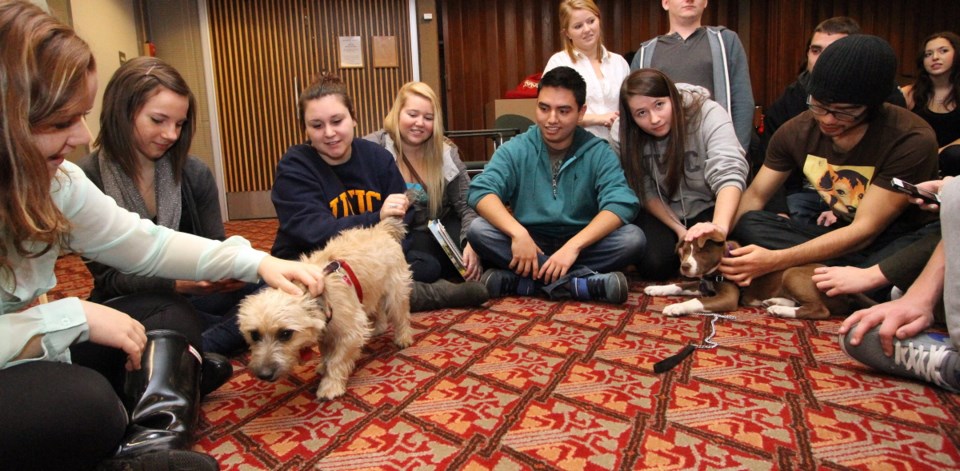When the University of Victoria played host to a De-Stress Fest last month, most of the attention focused on the school’s “doggy playtime” sessions.
For a few minutes, frazzled students could take a break and relax with a canine friend, receive a free massage or visit with Santa.
While the events got a lot of positive airtime, they represented just a fraction of what colleges and universities are doing to help alleviate student stress — something many argue is on the rise.
Post-secondary counselling centres report increasing demand for their services from students struggling with depression, anxiety and other mental-health issues.
“I would say overall the need for the service is increasing year to year,” said Liisa Robinson, head of Camosun College’s Counselling Centre.
The reasons for the increase are less clear.
A 2011 report for the Canadian Association of College and University Student Services noted that there is still debate about whether a higher percentage of students have mental-health problems today than in the past.
Counsellors argue that changes in rules and attitudes could mean that more students with mental illnesses are pursuing post-secondary education than in the past. Increased awareness of mental-health issues also means that more students are willing to acknowledge a problem and seek help.
“As the stigma drops, more people can access mental-health [services] in the same way that they go to a doctor,” Robinson said.
Few, however, dispute that students are under intense stress, particularly at this time of year when deadlines and exams hit at the same time.
Rita Knodel, a psychologist and director of UVic Counselling Services, believes many students are under more pressure today than two decades ago.
“Often, the career opportunities at the end of a degree are not as promising as when we went [to university],” she said.
“Many students want to go on to do graduate work or a professional program, so the competition to get good grades is high. Many students are working part time; many have families.”
Knodel said UVic’s counselling service tries to catch struggling students early and help them cope with stress before more chronic symptoms emerge.
To that end, the school offers a range of groups and workshops with titles like Yoga for Mood Management and Stress Reduction for Exams.
“We find that the group work really helps students not feel so isolated,” Knodel said. “Oftentimes, students will feel like they’re the only one.”
Instructors, too, are paying close attention to how their students are doing, said Martin Smith, a psychologist and teaching professor at UVic.
“We’d like to do everything possible to keep students in university and involved and connected,” he said. “A very high stress level is very counterproductive in that respect.”
Smith said first-year students are especially vulnerable if they are making the transition from high school to university, where they receive less supervision.
Smith has restructured his courses so that many assignments are due earlier in the term, when the workload is lighter and exams are weeks away.
“I do that quite mindfully knowing that this is something that will help students,” he said.
He also urges his students to join clubs, make connections and get regular exercise.
Knodel said schools are more aware of the issues than ever and keen to help students get the most out of their post-secondary experience.
“In some ways, we’re wanting students to be all that they can be while they’re here.”



